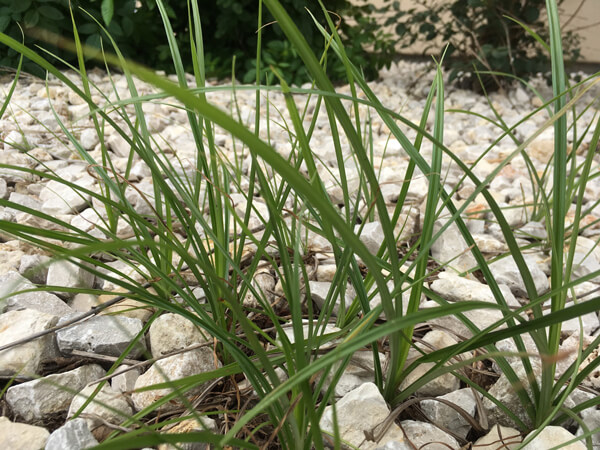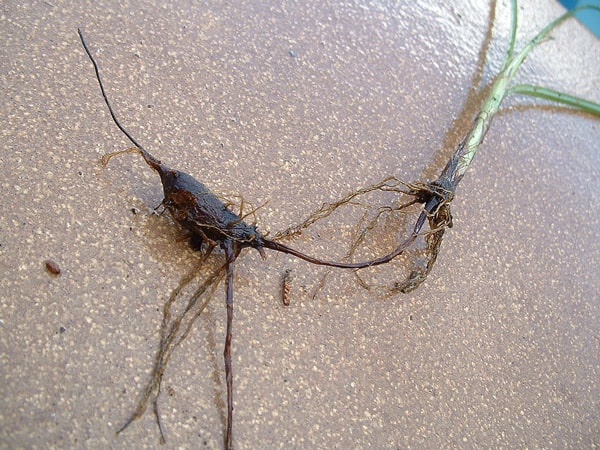Nutsedge is not your average weed. It’s a gnarly nuisance that’s difficult to control. And it’s a sure sign that a yard is poorly drained, overwatered or both.
Nutsedge. It’s been called the world’s worst weed. Once native to Africa, Asia, and southern Europe, it now infests crops, agriculture and landscapes in over 90 countries. Worst of all, it’s probably all over your yard.
The dark green, glossy leaves stand out in a lawn because they grow sooner, faster and taller than St. Augustine. Although nutsedge resembles grass, it’s more closely related to papyrus.

Also known as nutgrass, it’s difficult to control. Although nutgrass doesn’t set much viable seed, underground it’s a prolific producer of biomass; its secret weapons are the little tubers (“nuts”) where it stores energy, and which can add up to 5 tons per acre. Within weeks of budding out in spring, nutgrass will flower; after that, all its effort goes into producing more nuts.

Pull the leaves, and nutsedge sends up more. Pulling the nuts is a better use of time, but anything you miss will quickly recover. Chemical applications like Image, Manage and Sedgehammer can all be used to treat heavy infestations during summer, but they take time and require careful use and repeated application.
If you don’t have nutgrass in your landscape, you may be very lucky — or it may just not be there yet. But once the first daytime temperatures break 90 degrees, it’s only a matter of time till the nutgrass shows up. Rain and sprinklers will bring it on even sooner. Indeed, nutsedge growing in turf is often a sure sign that a yard is poorly drained, overwatered or both.
Many gardeners don’t discover nutsedge until they’re installing new landscaping; once the grass is gone, it pops up everywhere in the new landscape beds. It makes mincemeat of standard black plastic cloth. For better results, use clear plastic or cardboard.
The nuts are actually edible and antibacterial — they were a staple of ancient diets, and they were used in Spain as a typical ingredient in horchata!




